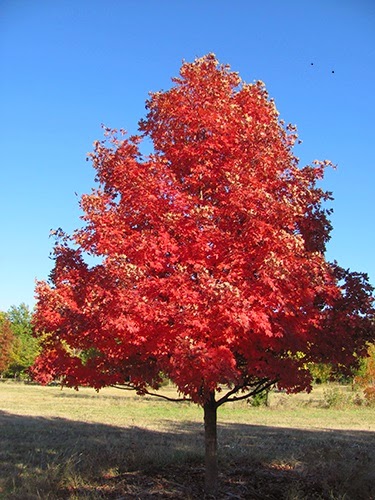Tomato Troubles?
Cassie Homan, Horticulture Agent
Tomatoes are the most popular vegetable grown in Kansas. Everyone loves the fresh taste of a home-grown tomato picked straight from the garden. They are easy to grow, productive in small garden areas, and used in a wide variety of ways. Tomatoes require a location that is fairly fertile, well-drained, and sunny, getting at least a half day of sun or more. Here are some tips on how to keep your plants healthy and some problems you may encounter over the growing season.
Spider mites seem to be a problem every year. It is inevitable that with hot and dry weather spider mites will make an appearance. Look for stippling on the upper surface of the leaves as well as some fine webbing on the underside of the leaves. These tiny arthropods (they are not true insects) are often difficult to see due to their size and their habit of feeding on the underside of leaves. If you think you have spider mites, hold a white piece of paper under the leaves and gently tap the plant. Mites will be dislodged and can be seen as tiny specks on the paper that move about.
Spider mite control can be challenging. A strong jet of water can be used to remove the mites but may not be as easy as it sounds. A high-pressure directed spray is needed to dislodge the mites. Since spider mites feed on the underside of the leaves, the spray is most effective if it comes from below. This can be difficult to accomplish with a thumb over the end of the hose.
Some gardeners use a water wand hooked to a shut-off valve. The water breaker is then replaced by a brass nozzle. Horticultural oils and insecticidal soaps (Safers, for example) can also be helpful. Spray early in the morning when temperatures are cooler and plants have rehydrated. You will likely need to treat more than once.
Something we often see in Kansas, during hot summer weather, is our tomatoes not setting fruits. Temperatures that remain above 75°F at night and day temperatures above 95° F with dry, hot winds will cause poor fruit set on tomatoes. In extreme summer heat, blossom drop is common. At temperatures above 90°F and with low humidity, poor pollination causes blossom drop and poor fruit set. It usually takes about 3 weeks for tomato flowers to develop into fruit large enough to notice that something is wrong and an additional week before tomatoes are full size and ready to start ripening.
Though there are "heat-set" tomatoes such as Florida 91, Sun Leaper and Sun Master that will set fruit at higher temperatures, that difference is normally only 2 to 3 degrees. There really isn’t a quick cure for this tomato problem, we must wait for cooler temperatures which will allow tomatoes to resume fruit set.
This time of year, two common leaf-spot diseases appear on tomato plants. Septoria leaf spot and early blight, both show up as brown spots on the leaves. Septoria leaf spot usually appears earlier in the season than early blight and produces small dark spots. Spots made by early blight are much larger and often have a distorted “target” pattern of concentric circles. Heavily infected leaves eventually turn yellow and drop. Older leaves are more susceptible than younger ones, so these diseases often start at the bottom of the plant and work up.
Mulching, caging, or staking keeps plants off the ground, making them less vulnerable. Better air circulation allows foliage to dry quicker than in plants allowed to sprawl. Mulching also helps prevent water from splashing and carrying disease spores to the plant.
In situations where these diseases have been a problem in the past, rotation is a good strategy. It is too late for that now, but keep it in mind for next year. If rotation is not feasible, fungicides are often helpful. Be sure to cover both upper and lower leaf surfaces, and reapply fungicide if rainfall removes it.
Plants usually become susceptible when the tomato fruit is about the size of a walnut. Chlorothalonil is a good choice for fruiting plants because it has a 0-day waiting period, meaning that fruit can be harvested once the spray is dry. Chlorothalonil can be found in numerous products including Fertilome Broad-Spectrum Landscape and Garden Fungicide, Ortho Garden Disease Control, GardenTech Daconil and others. Be sure to start protecting plants when the disease is first seen. It is virtually impossible to control this disease on heavily infected plants. If chlorothalonil doesn’t seem to be effective, try mancozeb (Bonide Mancozeb Flowable). Mancozeb does have a five-day waiting period between application and when the fruit can be harvested. You may wish to pick some tomatoes green just before you spray if you use Mancozeb and let the tomato fruit ripen inside.
If you have troubles with your tomatoes this season contact Cassie Homan, Post Rock District Horticulture Agent, at (785)738-3597 or by email at choman@ksu.edu











